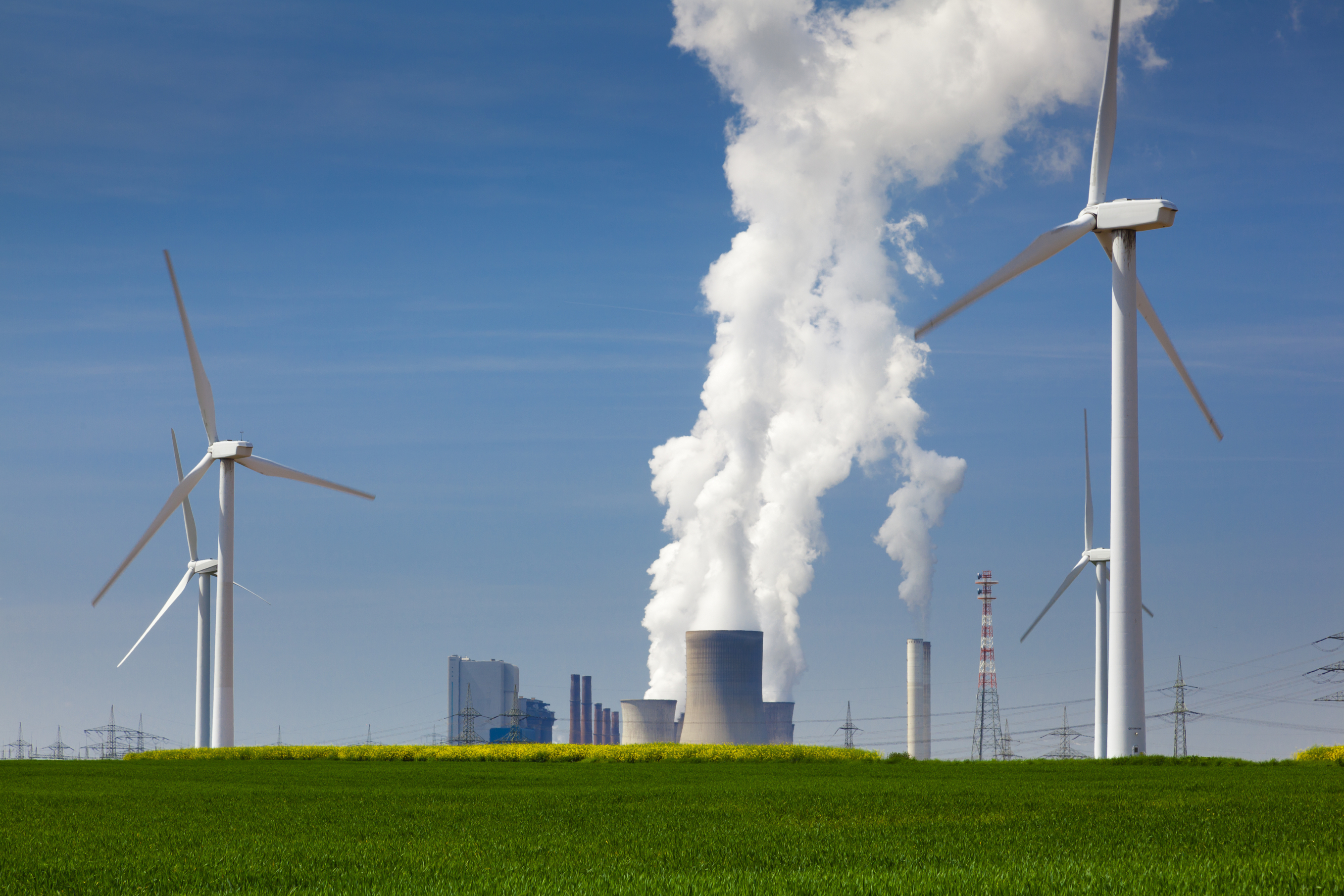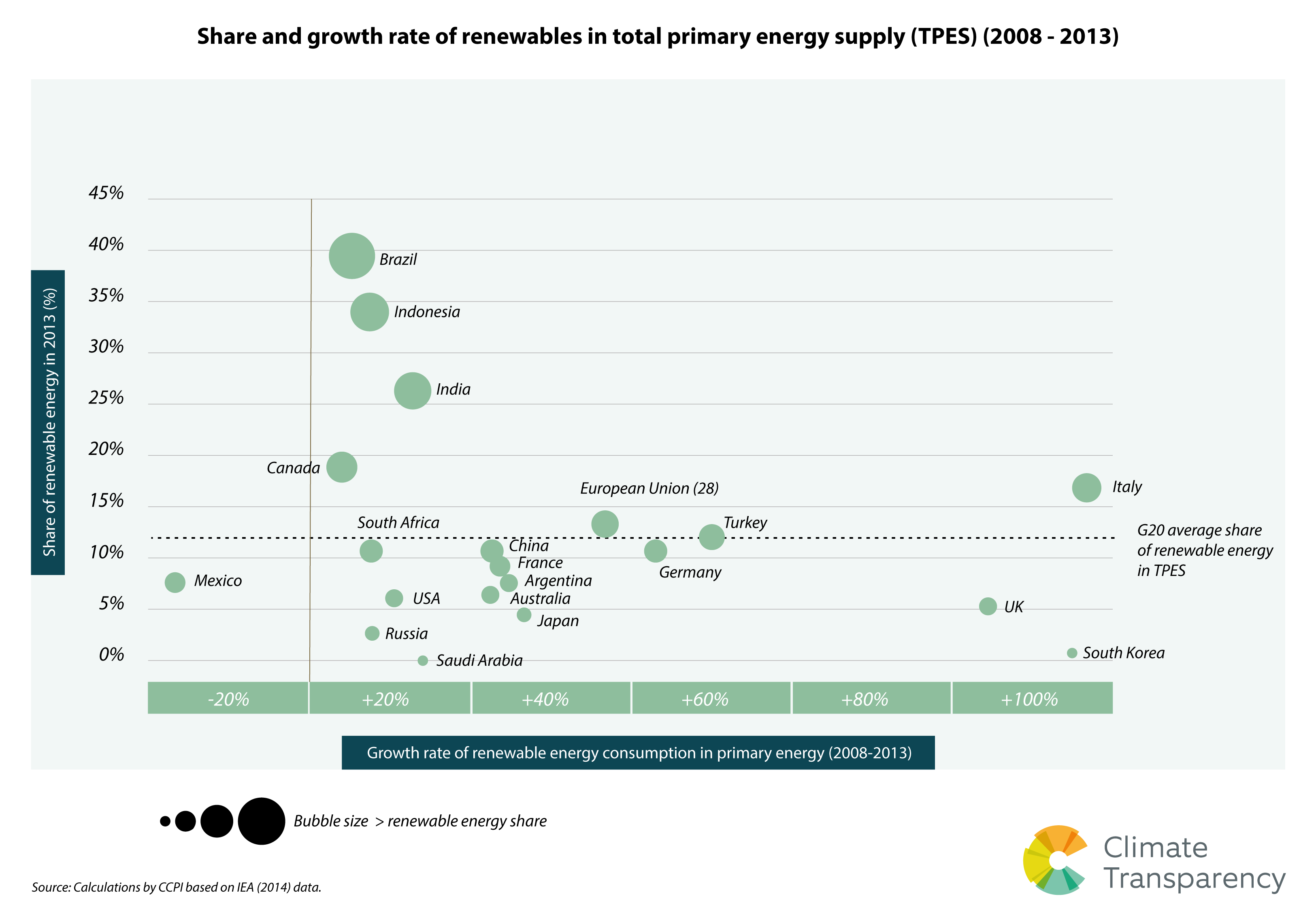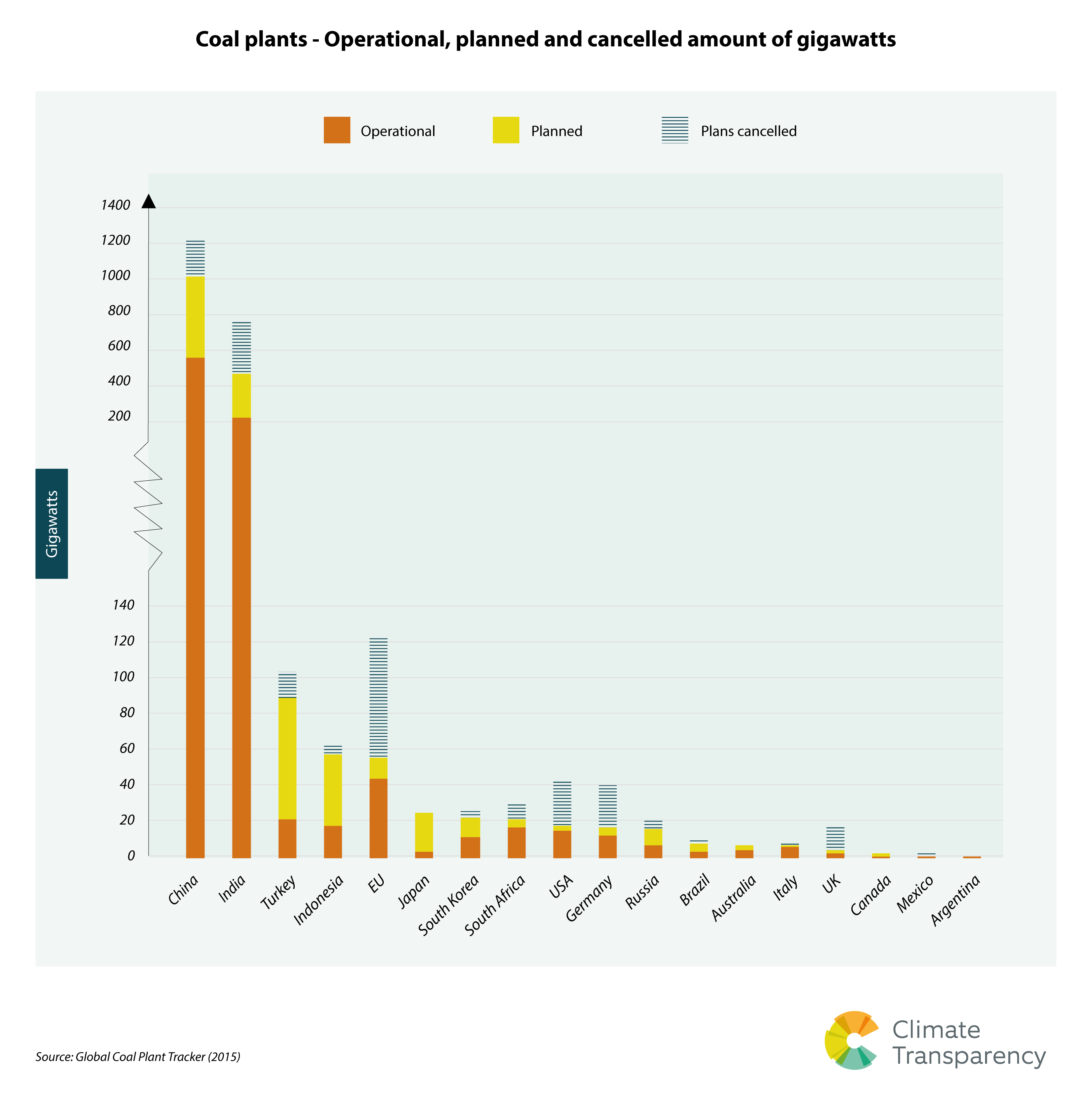Energy and Carbon Intensity
For the G20 as a whole, the energy intensity of the economy (TPES/GDP) and the carbon intensity of the economy (CO2/GDP) decreased by about 18% and 27% respectively between 1990 – 2013. This decreasing trend is, however, not enough to compensate for the increase in economic activity – so the absolute effect is an increase in total G20 emissions.
All G20 countries, with the exception of Brazil and Russia (and even they are expected to follow the general trend in the future), are reducing the energy intensity of their economies. While Brazil is below the G20 average, Russia has a high energy intensity, well above the average.
Canada, China, South Korea, Russia and South Africa all have an energy intensity level above G20 average. The UK has the lowest level, partly explained by a strong financial sector and an overall trend towards a service-orientated economy.
The carbon intensity of the energy sector (CO2/TPES) in the G20 is slightly increasing, a consequence of the still strong – and in some cases even growing – role of coal in the energy sector. Only Australia, the EU, France, Germany, South Korea, Russia, Turkey and the UK show a decreasing carbon intensity of their energy sectors. This trend may not continue, as fluctuations in the energy and electricity market can strongly influence the use of fossil fuels.
Share of Renewable Energy in the Energy Supply
For the G20, the use of renewable energy has increased by 18% since 2008. The only G20 country where the use of renewable energy has decreased is Mexico, a trend expected to change if it adopts and implements new policies currently under consideration – e.g. 35% clean energy target for 2024.
Brazil and Indonesia have the highest share of renewable energy in total primary energy supply, and positive growth rates, due to a large share of hydropower. The next is India, a traditionally high user of biomass.
Looking only at the power sector, Brazil’s already high share of renewables in its electricity mix is expected to increase from 82% in 2012 to 85% by 2030. Similarly, Indonesia’s share of renewable energy in the electricity mix, although much lower than Brazil’s, shows positive growth rates in future projections, going from 11% in 2012 to 17% in 2030.
Italy, South Korea and the UK have the strongest growth of absolute renewable energy consumption in primary energy; however, South Korea and the UK are starting from a low base.
Share of Coal in the Energy Supply
While, overall, the share of renewable energy is increasing in G20 countries, most of them still rely – in some cases to a very high degree – on coal in their total primary energy supply: South Africa (69%), China (68%), India (45%), Australia (37%), Turkey (30%), South Korea (29%), Germany (26%) and Japan (25%). The coal share of China, India, South Africa and Turkey will remain clearly above the maximum 2˚C benchmark in the time period until 2030. Increased coal use is a serious threat to keeping the temperature increase below 2°C, let alone 1.5°C.
Coal plants
The G20 countries’ operating coal power plants have a combined capacity of 975 gigawatts (GW). A further 900GW are planned. However, this should be seen in conjunction with the 650GW of cancelled new coal plant plans, i.e. not all planned plants are actually being built. Even if only a small fraction of the planned coal plants were built, it would become virtually impossible to keep temperature increase below the 2°C limit, or down to 1.5˚C.
Carbon intensity of the electricity sector
In basically all G20 countries, electricity use is growing faster than energy use. Full decarbonisation would require a shift towards renewables, and away from fossil fuels, rendering electricity as the most important factor in countries’ decarbonisation pathways.
Electricity emissions intensity (gCO2/kWh) varies significantly between G20 countries. At 925 gCO2/KWh, South Africa accounts for the highest – in line with the high share of coal in its electricity production. South Africa’s emissions per kWh are more than three times higher than those of Denmark, a worldwide good-practice example country that has neither large hydropower potential, nor nuclear power. South Africa is followed by India, Australia and Indonesia, who all have an electricity emissions intensity of over 800 gCO2/kWh.
G20 countries with low electricity emissions intensity are Brazil (100 gCO2/kWh), Canada (161 gCO2/kWh) and France (67 gCO2/kWh). The relatively low-intensity level in Brazil and Canada results from their large hydropower sector and, in France from its high share of nuclear power. However, neither Brazil nor Canada perform so well when compared with Norway, also regarded as a worldwide good-practice example of low electricity emissions intensity (8 gCO2/kWh), despite having a very high hydropower potential.











